


























Enjoy a more comfortable experience on the water with SeaStar Hydraulic Steering

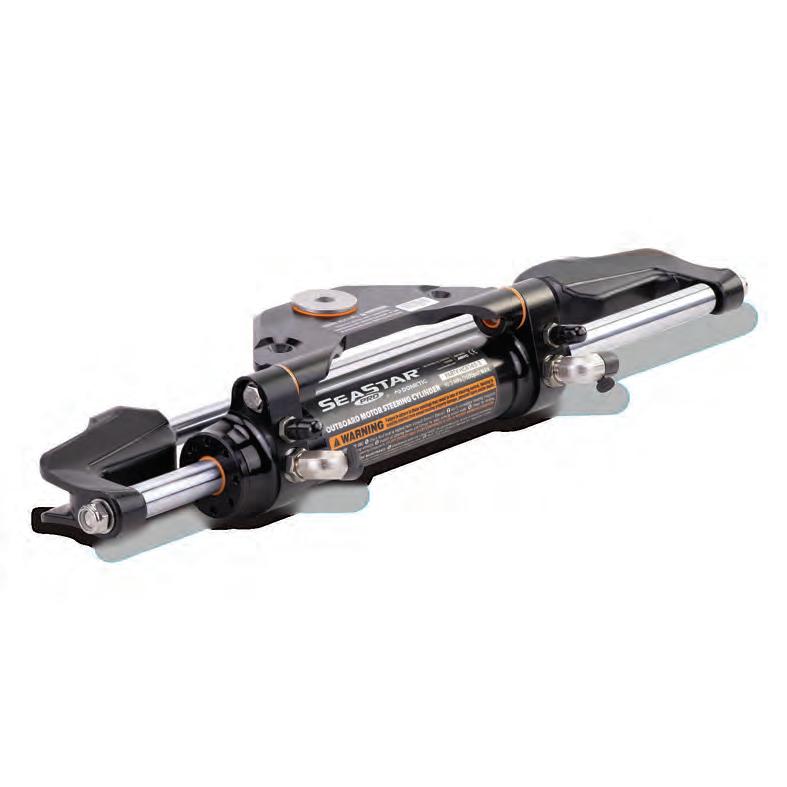
Have full confidence when you take the helm, with knowledge that you have complete control of your vessel. SeaStar Pro by Dometic hydraulic steering systems, with options for most applications, ensure you will always have a safe and comfortable boating experience.
www.dometic.com



The hunt for the perfect outdoorsman knife is over. There’s only one tool you need: the Whitetail™ Hunting Knife—now ONLY $49!
The consummate outdoorsman never goes on deep woods hunting trips without the essentials. Not just the basics for every hunting trip, but the items he’s come to depend on over the years. Our new Whitetail™ Hunting Knife will quickly become your go-to blade for every expedition. The Whitetail™ is a premium fixed-blade hunting knife that’s perfect for skinning. With the Whitetail at hand, you’ll be ready for field dressing in only seconds, and you’ll never need a separate gut hook tool ever again. The Whitetail™ boasts a mighty 420 high carbon, full tang stainless steel blade, meaning the blade doesn’t stop at the handle, it runs the full length of the knife. According to Gear Patrol, a full tang blade is key, saying “A full tang lends structural strength to the knife, allowing for better leverage ...think one long steel beam versus two.” The comfortable handle is made from pakkawood—moisture-resistant and more durable than hardwood. If hunting is your life, then the Whitetail™ Knife was designed to make your life easier.
With our limited edition Whitetail™ Hunting Knife you’re getting the best in 21st-century construction with a classic look inspired by legendary American pioneers. What you won’t get is the trumped up price tag. We know a thing or two about the hunt–– like how to seek out and capture an outstanding, collector’s-quality knife that won’t cut into your bank account.
EXCLUSIVE FREE
Stauer® 8x21 Compact Binoculars

-a $99 valuewith purchase of Whitetail™ Hunting Knife




complete refund of the


What customers are saying about Stauer knives...


“Good value. Great looking. Sufficiently sharp. Overall an “A” purchase and I ordered three.”
This knife can be yours to use out in the field or to display as the art piece it truly is. But don’t wait. A knife of this caliber typically cost hundreds. Priced at an amazing $49, we can’t guarantee this knife will stick around for long. So call today! Your satisfaction is 100% guaranteed. Feel the knife in your hands, wear it on your hip, inspect the craftsmanship. If you don’t feel like we cut you a fair deal, send it back within 30 days for a complete refund of the item sale price. But we believe that once you wrap your fingers around the Whitetail’s handle, you’ll be ready to carve your own niche into the wild frontier.
Whitetail™ Hunting Knife $79*
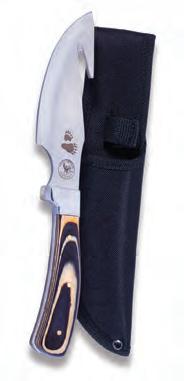
Offer Code Price Only $49 + S&P Save $30

PLUS Free Stauer Compact Binoculars
— B. of Maryland TAKE 38% OFF INSTANTLY!







When you use your INSIDER OFFER CODE




or those of us afflicted with the fishing bug, nothing will deter us from returning to the ocean. We’re often planning our next trip before the current one is over. There is no difference between fishing daily, or being deprived for weeks, the fisherman’s mind will never stop nagging to get back out there.
Fishing stories and trophies are a great way to keep the inner fishing-monster soothed in between trips.
Photographs are an easy way to relive moments, and should not be overlooked. It doesn’t take much effort to get out a camera and capture the catch when it hits the deck while its colors are vibrant and the smile is fresh on the angler’s face. Friends don’t let friends take deadfish dock photos without at least a few taken out on the blue.
When it comes to fishing trophies, there is a whole lot more to be taken home than just some good photos.
The standard go-to trophies are wall mount replicas, which can easily be reproduced with some measurements and photos. This provides the opportunity to release the fish and also be able to take it home with you. Gray’s Taxidermy does excellent work with this type of customization, and outfits most charter companies with the

 By Capt. Quinlyn Haddon
By Capt. Quinlyn Haddon
required paperwork to get you started on this process. Make sure to ask your captain about mounting your catch before you release the fish.
There are still people who work with the tried and true art of fish taxidermy, utilizing the fish itself, but these services are harder to find, and the product doesn’t last forever.
Gyotaku fish rubbings are another way to accredit the true size of a trophy fish. The fish itself is painted and printed on paper. This method does not allow you to release the fish, but if you work quickly, and utilize acrylics, the fillets may still be consumed. This is a fun method to try on your own, but there are artists you can hire for this as well. These trophies work out better when wall space at home is more limited.
Various parts of the fish can be taken and treated, such as bills, tails, skeletal systems and even eyeballs transformed into epoxy shot glasses. These trophies can have some of the best outcomes, but require some involved and stinky DIY processing. There are a variety of techniques for this, and endless creative potential.
Participating in fishing traditions is another great way to boost the excitement of a first catch, and add to the memory. Who knows how these got started, but it is our communal obligation to keep them alive.
I’m sure there are some I have missed, but here
are the ones I know of, and practice.
When you catch your first tuna, it is customary to eat the heart or, at very least, take a bite out of it. It’s not bad with a bit of lime and a chaser. Tastes a bit like what I would imagine tuna-jerky to taste like.
When you catch your first marlin, you earn a celebratory jump in the ocean. Usually, this is done back at the dock for safety reasons. This is the most refreshing dip you’ll ever take.

When you catch your first swordfish, your crew will hollow out the eyeball, as to make a cup out of it, and you then take a drink from it. I highly recommend being quick about this before extra slime leeches out into your drink. Don’t worry, it all tastes like victory.
However deep your commitment to your fishing affliction may be, the best trophy will always be memories of having a good time. Most importantly, don’t forget to enjoy being out there. Your local captains understand that it’s difficult to manage life between fishing trips, and we are here for you. Blue Magic Charters is available for your next fix, out of Marathon, Florida Keys.
Capt. Quinlyn, of Blue Magic Charters, is also a Gyotaku artist and a Gray’s Taxidermy agent. Contact her at (504) 920-6342 and follow her social accounts @CaptainQuinlyn.

small green drake just as it was annihilated by a frisky brown trout.
I hurried to tie on a Colorado Green Drake and caught a brown on my first cast. My second cast was taken as soon as it hit the water—a nice rainbow. By then, drakes were all over the surface and the trout were feeding without hesitation. One trout went airborne, and I swear it was looking for the next green drake on its way back down.
It was dry-fly heaven fishing my 7.5-foot “Perfectionist” bamboo rod (made by “Preacher Jim” Beasley, of Crossville, Tenn.) and a green drake tied on 5X tippet. But over the ridge came ominous blue-tinged storm clouds. The pyrotechnics began immediately, with lightning pinging down all around me. Seeking safe haven, I dove into a shallow creek bed that emptied into the river. Elk, deer and bear tracks had beaten down the bed and formed foot-high banks. It was muddy but much safer. At first, it was too dangerous to even sit up, so I lay in the mud and watched the hatch, which was still in full swing.
In 25 years fly fishing, I’ve only experienced two bona fide green drake hatches. The second time I witnessed one of these hatches it was spectacular, the stuff of legends.

Green drakes are large mayflies that, under the right conditions, hatch in huge numbers and send trout into feeding frenzies. It happened for me one afternoon at about 8,750 feet of elevation on a Colorado river. The left bank hugged the base of a mountain ridge and the right bank opened onto a flat meadow of grasses and wildflowers. It was hot and windy—a tough day for fishing dry flies, but I’m a stubborn dry-fly bigot. I refused to nymph and hadn’t caught a single fish until the weather changed. Clouds floated over the ridge and the temperature and pressure dropped. A bright-white flash and instantaneous rumble sent me toward the truck, but on the way I spotted a
Eventually, the lightning lessened, and I was able fish. Once, two fish—a rainbow and a brown—came from opposite directions and arrived at my fly at the same time. A violent collision of noses ensued, and both fish quickly retreated. My drake was partially submerged after impact, but a different brown appeared, circled once, and daintily took the fly. He was not happy when I hooked him!
Once, I was surprised when my drake drifted almost back to me without a strike. Just as I was picking up the fly to cast again, an upstream brown came like a freight train. It took the fly on the uptake, went airborne and hit me in the chest. When you get nailed in the chest by a 16-inch brown, it’s gotta be a green drake hatch!

This short story (copyrighted by the author) and many other true-life fly fishing adventures can be found in Michael Fitzsimmons’ book “Adventures of a Dry-Fly Junkie,” available only on Amazon. Contact the author at dry_fly_junkie@hotmail.com.


Everyyear in Basel, Switzerland, the world’s best-known luxury watchmakers gather to display their new timepieces.
It’s a great event for spotting timepieces that standout–– in performance and in personality. We saw one impossible to ignore: a precision dive watch with an arresting green dial. But we also saw the five-figure price tag and knew we could bring our customers that exact same precision and stand out appeal for a whole lot less. The Stauer Evergreen Diver is that timepiece.
Built like a submersible battleship with a stainless steel case, caseback, and band, the Evergreen Diver is water-resistant down to 660 feet or 20 atmospheres, a feat facilitated by a hardened crystal and screw-down crown.
Green On Your Wrist AND In Your Pocket. You could pay an awful lot elsewhere for this verdant virtuoso, but the majority of the cost is in the big designer name upcharge. We think those guys are all wet. This is how you own a top-of-the-line dive watch without helping pay for some marketing guy’s yacht.
• Precision crystal movement


“Whether
Satisfaction Guaranteed or Your Money Back. Wear the Evergreen Diver for 30 days. If you’re not completely happy, send it back for a full refund of the item price.
Limited Reserve. A watch of this caliber, with a price that won’t drag you under, takes 6 months to create and won’t stick around for long. Call today!
Stauer Evergreen Diver Watch non-offer code price $399† Offer Code Price $99 + S&P Save $300

You must use the offer code to get our special price. 1-800-333-2045

Your Offer Code: GDW163-01

• Screw down crown
Rating of A+

Please use this code when you order to receive your discount.
• Stainless steel crown, case, caseback & band
• Magnified lens over date window at 3 o’clock
• Water resistant to 20 ATM
• Fits wrists up to 8 ½"


boat. It really is a very nice boat, notwithstanding the price point.”
The Mitzi Skiff 17’ is a stripped-down and customizable version of the 17’ Tournament, which comes with the options Grubbs said most of his fishing customers were asking for. Both boats draft just 7 inches loaded, they pole easily, they pole straight, and they reach speeds into the 40s with a 60 hp engine.

While the 15’ is a one or two-man boat that’s at-home on the flats, the 17’ can fish three people and it’s got better range. The 17’s primary purpose is still as a flats boat, yet it also doubles admirably as bay boat.

“It’s not just a flats boats; it’s a little bit of an open water boat, too,” Grubbs said.

The 17’ features a modified V-hull with an 11-degree deadrise at transom. There’s no hull slap, and rolled gunnels knock down spray for an exceptionally dry ride. They are built for light weight to run shallow, yet they are solid and durable to stand up to long years of heavy use.
Going back to the mid-1990s, Mitzi Skiff has led the industry with no-nonsense flats boats for skinny-water anglers.


In the very beginning, Tom Mitzlaff’s intent was to design the boat he needed to fly fish the flats. He couldn’t find an affordable boat on the market with the shallow draft, clean layout and quiet maneuverability he needed, so he designed and built the original 15-foot Mitzi Skiff.
That boat revolutionized the marketplace. Mitzi Skiff became the brand for skinny-water anglers who value simplicity and functionality. A Mitzi does everything the pricier skiffs do, yet they are affordable enough for any angler to own


and operate.
About 30 years later, Mitzi has expanded to offer 15’, 16’ and 17’ skiffs that all perform the purposes of the original design exceptionally well. Continued innovation has made Mitzi a boat other builders imitate, and they still come at a significantly lower price point than the competition. The 17’ and the 17’ Tournament have become the brand’s hottest sellers.
“The 15’ took the micro-skiff market by storm,” said Brad Grubbs, who owns and manufactures Mitzi Skiffs in North Carolina. “Since then, the brand has sort of evolved toward the 17’, which works just fine as a multi-purpose
From hideaway pushpole holders to flushmount hardware, Mitzi has obviously put some thought into making decks clean and fishable for fly anglers. Large, clean and stable casting decks are something Mitzi has become known for.
“Keep it simple stupid, and if it ain’t broke don’t fix it,” Grubbs quipped. For nearly three decades, Mitzi has built skiffs for anglers more interested in fishing than in spending a lot of money. It’s a philosophy that works.
Mitzi Skiff boats are available exclusively through select dealers. For more on Mitzi Skiffs, go to www.mitziskiffs.com.
Performance Bulletin Available
59 YEARS OF REPOWER EXPERIENCE!
Mastry Engine Center has received the Suzuki Marine Super Service Award and has been ranked #1 in Suzuki Marine US Sales!
Repower packages designed to best fit your needs and not stretch your budget. Financing available.





All Suzuki repowers come with the new Suzuki 5-year factory warranty.
Many of our Suzuki RePower Centers feature Water Accessible Drop Travel Lifts.

Suzuki RePower Centers are stationed around the southeast to help with your Suzuki service and repower needs.













• Charlotte Harbor - Match current Gulf Coast regulations, and:


In a move similar to recent management changes for red sh, e Florida Fish and Wildlife Conservation Commission (FWC) is looking at changing the way it manages snook. At its May meeting, FWC proposed creating new management regions for snook to allow better
control over localized di erences in the shery. e proposed rule changes would:
• Establish nine snook management regions.
• Match current Gulf or Atlantic coast regulations within new regions, except for Charlotte Harbor.
- Implement a two- sh vessel limit,


- Include September in the summer season closure.

“ is adaptive, holistic approach to sheries management is the key to conserving our sheries for future generations,” said FWC Chairman Rodney Barreto. “On behalf of the Commission, I want to encourage anglers and anyone interested in the future of snook in Florida to get involved and share your valuable feedback with FWC sta .”
Sta will continue gathering input on the proposed rules ahead of a planned nal rule hearing at the October Commission meeting. Submit public comment on snook regional management by visiting MyFWC.com/ SaltwaterComments.
In other news from the meeting:
• Proposed no- shing zones around three goliath grouper spawning aggregation sites was tabled with no action taken and no plans to resume discussion. e areas that were being considered for 700-foot no- shing zones around wrecks and reefs remain catch-and-release only.
• Management changes were approved for greater amberjack in Atlantic state waters. An April spawning season closure for recreational anglers will be established, the commercial size limit was reduced from 36 to 34 inches, and the import size limit was reduced from 36 to 34 inches statewide. ese changes will go into e ect at a later date.
For more information, go MyFWC.com.





















Trade-in your dirty, uncivilized, oil-burner for an environmentally responsible, clean, quiet, efficient Suzuki 4-stroke!


For a limited time, when you purchase a new Suzuki outboard from an authorized Mastry RePower Center you will receive a Special Trade Allowance for your dirty and outdated 2-stroke outboard. This is Mastry’ s commitment to help keep our waterways clean as well as making it easier for you to improve your boating experience with an up-to-date quiet, efficient 4-stroke outboard. Contact your closest Mastry RePower Center for the details of this Exclusive Mastry RePower Center Offer.












The 2023 CCA Florida STAR competition presented by Yamaha will o er more opportunities to win than ever before. is 100-day, summer-long competition begins Saturday of Memorial Day weekend and invites CCA members, non-members, anglers and non-anglers to take a shot at winning their share of prizes valued at more than $500,000 including boats, motors, electronics, tackle, scholarships and more. e winning begins even before the competition does with the early registration package providing a complimentary ra e ticket to win a Hewes Red sher, a 25 percent discount from TH Marine and free access to the Red sh Mastery course from Salt Strong.

But it’s not just about anglers winning but the shery too. Not only can participants become winners, they become citizen biologists and citizen garbologists by submitting photos of their catch or garbage collected during the competition in the STAR app. In order to win, participants must take their entry photo on the 2023 CCA FL STAR
O cial Measuring device which can be picked up for free a er May 20 in any West Marine store or one of the many other STAR distribution locations throughout Florida.
e competition has a division for everyone, from the non-angler to the experienced angler. It is comprised of 15 divisions targeting 12 inshore and o shore species plus the Costa Kick Plastic Trash Division presented by Papa’s Pilar, which encourages cleanup of trash from Florida’s coastal waters.
STAR’s signature Tagged Red sh Division o ers seven winners, ve adults and two youth, the choice of a Contender Boats 22 Sport, Path nder Boats 2200 TRS, and STAR would like to welcome back Carolina Ski o ering the 162 JLS. STAR has additional new Tagged Red sh sponsors with Dek Kat Boats o ering a 27 Flatz Kat and Sea Doo
and Can-Am o ering a fun package of a Sea Doo FishPro Trophy and the Can-Am Defender. Each boat will be powered by a Yamaha. Be the rst winning tagged red sh angler for your choice of all these packages as your prize.
Once again in 2023, an ALTA SUPER STAR tagged red sh is swimming Florida waters. If it is recaptured, the winner will receive $50,000 cash! For the rst two youth anglers who win in this division, prizes include a tiller boat powered with a Yamaha outboard, a trailer, a Minn Kota trolling motor and Humminbird electronics.
Each coastal county will have, on average, four tagged red sh for a total of over 160 prizewinning sh. e best opportunity to catch one of this year’s tagged red sh will be in Citrus and Charlotte Counties, STAR’s 2023 Destination Counties, which each have eight tagged red sh in their coastal waters.
For the o shore anglers, the Tigress Outriggers and Gear Tagged Dolphin Division o ers one winner a $10,000 cash prize. e rst STAR registrant and CCA Florida member who catches one of the tagged dolphin will win. Twenty dolphin (Mahi Mahi) will be tagged and released for STAR in the Lower Keys.
STAR is a family-friendly competition, and CCA Florida youth members (ages 6 to 17) can participate for free. Kids are encouraged to submit entries in the Youth Scholarship Division presented by Realtree Fishing for an opportunity to win one of twelve scholarships totaling $100,000. To date, the Florida STAR competition has awarded $800,000 in scholarships to youth from all over the state. Another great component of STAR for youth participants is they can earn 30 minutes of community service for every 5-gallon bucket of trash they pick up from Florida’s coastal waters and submit via the STAR app.
Other divisions include the Power Pole
Conservation Division, Bona de Kayak Division and Ladies Division as well as the Yamaha Guides, which allows guides to participate when they are not on a charter for hire. Since most division winners are determined by a random drawing, it is not about catching the biggest sh; any size sh can win. Remember, every sh you catch between Saturday, Memorial Day weekend and Monday, Labor Day, o ers the CCA member who is registered in STAR the opportunity to win their share of nearly $500,000 in prizes and scholarships. But you can’t win If you are not registered.
Not only is the STAR competition a wonderful way for participants to win amazing prizes, it is a tool to gather catch data, it creates awareness for conservation, our sponsors and CCA Florida. Launched in 2015, the competition has set the bar for other shing tournaments to follow by implementing conservation-friendly alternatives such a catch-photo-release format and a trash division.
Florida STAR focuses on conservation with its technology-based, CPR format and dedicated smartphone app which promotes the proper handling of species and allows participants who are members of CCA and registered in the competition to upload photos of their catch or trash buckets in the STAR competition and be rewarded for their e orts. is eliminates the requirement that some traditional tournaments have to harvest or capture and transport sh to win. CCA Florida also provides access to the data collected from the app to other conservation organizations and universities to help educate the public on the importance of protecting Florida’s marine resources and for use in their studies on conservation, habitat and stock assessments.
For more information and to register, visit http://cca orida.org/event/star/.




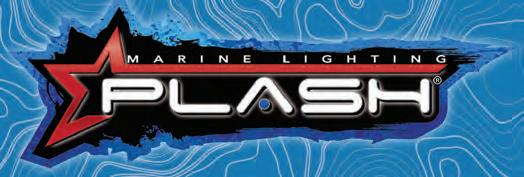






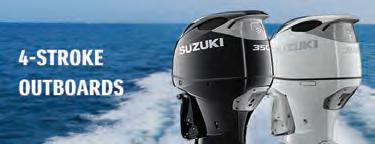
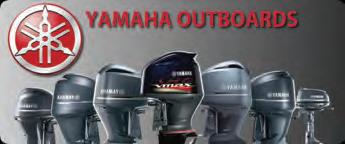








Ever since I started shing, the basics have stayed the same. If we all tell the truth, none of us started out catching gags and wahoo. It was probably more like bream, bass, cat sh and shad. Granted, we didn’t sh as many lures back then as we do now, but the basics are still the same. Back then, we shed a lot of the four or ve loop sherman’s knots for soaking baits. I no longer use these.
Now, I tell folks if you know how to make ve connections, you can go anywhere in freshwater or salt and sh for almost anything. ese ve connections are:
1) Loop knot
2) Snell
3) Uni knot (includes uni-to-uni knot)
4) Crimps(cable and uoro)
5) Double tackle loop
Granted, there are other helpful knots like the Piere knot, which is a good wind-on for connecting braid to Floro, but I’ll stick to my guns here and say these ve are the ones I use. ere are three of these I can tie in pitch black dark and have tremendous faith they’ll
never fail.
I can hear it now… “Yeah, you forgot this one and you need to know this one.” OK, but the title of the article is “getting back to basics,” and these ve work for everything I need to do. As soon as any of these
meat and potatoes of the freshwater, inshore and nearshore shing I do. I make connections from braided main lines to smaller uoro leader material with the uni-to-uni. e loop knot works best on most lures. e loop knot gives any lure the freedom it needs to swing or change directions freely.
e snell has a place for freshwater, inshore, nearshore and o shore. is is simply because I feel the snell is a requirement for all circle hooks, in my humble opinion.


e crimps make for ease of heavy-duty connections from uoro leaders to swivels and then to braided main lines. e crimps also make heavy-duty cable connection to stinger hooks and to arti cial lures.



ve starts failing on me, I’ll consider something else, but between now and then, these work for everything from bream to bill sh. e loop knot and uni knot make up the


I’ve got some videos on my website on how to tie and utilize these ve connections. Some of these videos have some age on them, and I have received some request to make new ones with better lighting, backgrounds, etc. I may very well update them in the near future. However, all these videos show the knots in pretty good closeup detail. Stay in touch with my you tube channel and website for these new videos.
See more from Tim Barefoot at Barefootcatsandtackle.com.


The Sport shing Championship held its inaugural event, e Catch, in mid-April and it sprinkled teams of top local captains with well-known NFL players for o shore action out of Miami.

NFL players at the event included stars like Justin Herbert (QB, L.A. Chargers), A.J. Brown (WR, Phi. Eagles), Dalvin Cook (RB, Minn. Vikings), DeAndre Hopkins (WR, Ariz. Cardinals), Chris Jones (DE, K.C. Chiefs), Matthew Judon (OLB, N.E. Patriots), Patrick Surtain II (CB, Den. Broncos) and Quinnen Williams (DT, N.Y. Jets).
e football players were split into groups
 By Astrid DeGruchy
By Astrid DeGruchy
to sh with renowned captains aboard powerful sport shers and be challenged in ways they may never have experienced before.
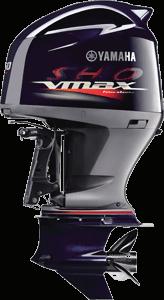


e event was broadcasted live from the Fontainebleau in Miami. Spectators were able to tune in and follow the hook-ups in real-time as NFL superstars got tight, reeling in species like black n tuna, sail sh, yellowtail snappers, bonitas, mahi and more.

rough the tournament, the players learned that catching these sh is no simple task, and that it requires a unique set of skills to hook and successfully reel them in. e experience gave

them a newfound level of respect for anglers and, for many, sparked a newfound interest in shing. e competition was close, but Team Gypsea, led by Capt. Taylor Sanford and supported by fourtime Pro Bowlers Matthew Judon and Dalvin Cook, claimed the championship trophy. e grand prize winnings consisted of a $100,000 donation to the Coast Guard Foundation.
“It was fascinating to watch elite NFL athletes realize how much e ort it takes to reel in saltwater sh,” said Je Stillwell, president of Salt Life. “ eir willingness to learn about techniques and take a genuine interest in doing things correctly shows why they are top-tier athletes. Plus, there is nothing like seeing someone catch a sh for the rst time!”
SFC’s e Catch had various components, including a pro-am tournament with other NFL legends and athletes. e Awards dinner was incredible, featuring a breathtaking drone light show and a Havana-themed atmosphere.
For more, visit sport shingchampionship.com. Follow Astrid Degruchy’s shing adventures on Instagram @catching_astrid.















The Florida Keys are an adventure with many great places to stay, fish, eat, and drink. Add it to your “frequent destinations” list and you won’t be disappointed.

With spring fever in full swing and the June summer transition just ahead, it was time to take a short trip someplace fishy. The spring season is also the best time to load up on some delicious blackfin tuna that migrate thru our area. What better location than Islamorada and the Florida Keys. This destination is just a stone’s throw away from most of us along the southeast coastline and yet feels every bit remote as a Caribbean destination. And of course – fishing is a primary recreational activity!
It has become a family tradition to fish then head to any of the excellent local restaurants to eat what we catch. Our preferred destination for this is Islamorada and the famous Islamorada Hump! Roughly twenty miles offshore, this location holds an abundance of fish year-round.

The topology of any of the humps along the east coast is perfect for holding baits throughout the seasons and therefore a surefire feeding lane for pelagics like tuna. The Islamorada Hump rises from the depths to within 290 feet of the surface and creates many desirable rips and currents to fish. We could be reasonably sure with the right boat and captain we would intercept feeding fish. These same conditions hold true for any of the local humps that can be found out of many ports of call along the Eastern Seaboard.
There’s no better way to spend an evening –fresh homestyle fish dinner with friends.
Our first order for a successful trip was engaging a local captain, knowledgeable in this fishery. Enter Captain TJ Zinkland, Heavy Guns Fishing. We have used him in the past because quite simply he is excellent at what he does and produces results. TJ is a “natural”. You just know this man will find the fish.
Conditions were questionable, with an abundance of both nuisance weeds and sharks this year. With a steady twenty knot wind out of the
northeast, conditions would be lumpy at best. TJ’s vessel is a 36’ Contender center console with triple Merc 300’s –more than up to the task.
Even in these undesirable conditions, Captain TJ went up in the tower and began the day “run-andgun” style searching for birds that might indicate feeding fish. This is critical in the Keys and not so much in Jupiter – my home port of call. We seldom rely on feeding birds as they are just not as prevalent as in the Keys. TJ had a mix of live and fresh frozen baits at the ready and gave us a rundown on what to expect. I’m proud to say we boated eight tuna and three mahi without TJ having to come down from the “crow’s nest” to assist! My good friend and partner for the day, Tom O’Brien and I, didn’t lose a single hooked fish although we came close several times given the adverse conditions.
The secret to boating these football sized tuna and school sized mahi is to reel them to within three feet of the rod tip then use their forward momentum to pitch them over the side and in the boat. Once we were


With summer on our minds, it is hard to believe we are halfway thru 2023! The water temperatures will be gradually rising another two degrees to an average of 82.6⁰F. During this month, wind speeds should become fairly consistent with calm to moderate easterly breezes the majority of the time. Anglers, please be sure to take heed of Mother Nature and pay attention to afternoon thunderstorms. Late afternoon thunderstorms build and creep up on you quickly if you’re not paying attention. I would suggest getting an early start if you decide to head offshore to find dolphin. If you are the first to find an offshore weedline it can make a huge difference as to what lands in your fish box at the end of the day.
Bottom dwellers such as groupers, yellowtails, mangroves and muttons will continue to be plentiful. Blackfin tuna ranging
Please be sure to check out my YouTube Channel “Darcizzle Offshore” for fishing videos every week!

www.youtube.com/DarcizzleOffshore

from 20-30lbs are in our area too, confirmed by numerous local fishing reports. Sailfish are also a likely catch, which are still around in smaller resident numbers. Bonito will make a grand appearance this month and will be thick in numbers around the reef in 80 to 150 feet
of water all the way from Boynton Beach to the Juno ledges. This is a great fish to fight on light tackle. They are loads of fun for the kids to catch and provide great excitement for a family outing offshore.
Throughout the month of June, we should continue to have a substantial and constant bite offshore. The dolphin bite should continue to be red hot during the month, from Boca Raton, Palm Beach and Jupiter. If you’re on the hunt for that elusive, hefty bull dolphin; here is a MUST read tip for you! Birds are an important factor when you’re offshore, majority of the time they are over bait, debris and pelagics. Lone frigates are often found following sizable pelagic fish that pushed bait to the surface. However, if the birds are facing into the direction of the current and hovering over a small area, they are over large dolphins. This is because larger dolphin, face into the
current preying on bait and small fish moving with the stream. But if the birds are circling and moving upstream with the current, they are over schoolies. Small dolphins feed and move with the current because they are not strong enough to fight the stream. This method works very well and 9/10 times you will know what you’re dealing with before you get to them!
















ere is your inshore, nearshore, fishing forecast for Palm Beach County for the month of June. This is an awesome month for light tackle and flyfishing especially on the nearshore reefs and offshore ledges. Bonita, kingfish, mahi, and tuna are all common catches. I normally have one angler throw a topwater with either no hooks or a single J hook on the back as a teaser and will follow up with a beta fish fly on a 12-weight rod. You must really make sure your tackle is pretty stout especially since the sharks are a big issue. When it comes to artificials, just about anything that hits the water will get bit, but big diving jerk baits and topwater poppers are very productive and a lot of fun. I suggest you also use the heaviest leader you can get along with a reel with pretty heavy drag.

Change out the treble hooks to J hooks especially if you don’t plan to keep a lot of fish, it will help with the release. Once you’re ready to head towards the inside, there will be tarpon and big snook around all the inlets and on the bridges. Keep in mind it is spawning season and harvest is closed so take extra care of those big females and release them as fast as possible, it’s a good practice to have the camera ready before the fish gets landed. Snap a couple pics, revive the fish, and let it go. They are producing our future fishery.
This giant peacock was
In the freshwater, the peacock bass fishing will be off the charts. I suggest fishing early as the water will start to heat up by midday and possibly slow the fishing down. Try waited flukes, chrome jerk baits, and if you like topwaters, the Yo-Zuri Prop Bait in fire tiger has been a big producer. On the fly rod, tan and white Clousers with some gold flashes have been the fly of choice. Nighttime fishing for clown knifefish will be good also with the main bait going to be live shad. They are a nocturnal fish, and the bite can be amazing after the sun goes down.

Good luck out there!


 By Bill Wummer - Team Spiced Rum III
By Bill Wummer - Team Spiced Rum III





The Spiced Rum III Fishing Team fished the AGC Contractor’s Tournament, and came in 1st Place, Big Fish. We started out fishing off Juno Beach in about 120ft of water and we caught 4 kingfish up to 20lbs and had a few get eaten by sharks. I talked with my close friend Alex from Seapremacy Fishing Charters, and he told me he had got a good fish at Loran Tower, so we decided to run up there. When we got there, we fished for about an hour and caught a 30lb kingfish on our Cannon Downrigger. We kept fishing and about an hour later the top line went off with a goggle eye on it and the fish took off. We chased it down and gaffed the fish within 5 minutes and luckily, we did because there were sharks around. The next fish we had on got sharked within 2 minutes.
Our winning fish was a 36.4lb king. We also took overall Top Aggregate of 129lbs for 5 kingfish. We could not do this without help from our Cannon Downrigger by always putting us to the depths to catch the fish, and Solix G3 from Humminbird Electronics for keeping us on our marks and finding the fish with our down and side imaging. Thank you so much for all you do for our team.






 By Christopher Sprague Chris!
By Christopher Sprague Chris!
Hello anglers, I hope you all have been able to get out on the water and enjoy the beautiful weather! Now that summer is approaching, we are starting to get the calm seas and blue skies. Lately, the fishing has been hot! We fished the Fort Pierce Invitational Kingfish Tournament recently. It was a 2-day tournament, and the kingfishing was red hot at this one spot up North around Jupiter Pier. On the first day, we got so many fish, it was nonstop action, however, none of the fish were anything super good. Our first bite of the day was our best, we had a screaming run only 15 minutes after the tournament started and then whatever was at the end of the line cut straight through the wire. This was a horrible feeling; we knew it was likely a wahoo or a monster kingfish. We kept getting bites later, but they were all in the mid 20-pound range and we probably got 20 fish throughout the day. It was madness, we would get fish after fish and our main concern was if we were going to run out of bait. We hoped day 2 would provide us with some better fish, but unfortunately, we did not get anything great. We got even less fish than the day before, and it was another day that we couldn’t pull out any fish above the mid 20’s. Even though we didn’t win, I do have to say that this was one of the most thrilling tournaments I have ever fished. We had 2 of the most action-packed days and made so many memories with the team, hopefully next tournament we can get a bigger one!



Snook should be on the mind if you are looking for some good catch and release action this month. In and around Jupiter, Palm Beach, and St. Lucie inlets are great places to fish in the kayak. There are multiple launch locations and the inlets are large enough to be safe. Try fishing live pilchards or mullet on the bottom and top. Fishing the spillways when they are open around heavy rains can produce a bunch of snook. June is the beginning of the rainy season and these fish attraction devices should
not be over looked. A D.O.A. TerrorEyz is a favorite, but don’t forget to bring a colorful 1-to-2-ounce buck tail to throw in the wash.
Fishing offshore in June means calm seas and hot sun. Blackfin tuna will become more consistent on the jig. Use 100 gram Catch Fishing vertical jigs in pink and silver to pull up these fish in 200300 feet of water. Trolling 20ft Yo-Zuri Crystal Minnows are also a great way to pick off a few. The sun will start to heat up the water quick this time of year. Getting out at the crack of daylight is your best bet to get on the bite. Live goggle eyes and blue runners are always the go-to bait for sailfish, mahi, kingfish, wahoo, and tuna.

Check us out Pushin’ Water Kayak Charters on Facebook, Instagram, TikTok, and YouTube for all the latest adventures my clients and I get into.
See you on the water!

believer!!! e morning started slow; I caught a small snapper and small snook. Neil was in skunk mode, so we decided to try a spoil island where I’ve caught some trout, snook, and a gag grouper on a prior trip. To our dismay it was dead as well. Just as we were about to exit stage le , Neil was working a topwater lure back to the boat when what appeared to be a large bull shark came up from the bottom and tried to hammer the lure. Unbelievably it totally missed the lure and disappeared. It was impressive to witness such a big specimen of a sh take a swipe at the lure.
Plan C and move from the east side of the Indian River to the west side. I’ve had some nice shing on the west side with trout, reds, and snook. We made our way across the river stopping at another spoil island only to be greeted with a jack attack. I landed several jacks and Neil hooked one that got o . His skunk was still intact but with jacks around I gured that would change. Unfortunately, that wasn’t the case.
get a glimpse of a red, snook, trout, ounder, or any inshore species willing to bite. As we approached the shore, we noticed another bull shark working the shore and of course I had to make a cast or two at him, but he had no interest in my o ering. We kept working the shore and nally it happened for Neil!!! He made a long cast and almost as soon as the lure hit the water, he was on with a nice sh, but we couldn’t see what it was. He started gaining ground getting it closer; enjoying the ght and then it happened! e sh came unbuttoned and at this point I was like dude, what did you do in a previous life to deserve this??? We made our way toward a dock that I know holds snook. I made a long cast and right then I was hooked up with a huge sh. It was a big snook; I got her to the boat, revived her, and released her to ght another day.
to me that he ate a banana for breakfast! Neil knows not to bring bananas on the boat (it’s bad luck), but it didn’t occur to him that the curse would remain in e ect with it digesting in his stomach. Myth con rmed or was it bad luck? He should’ve brought his lucky rabbit foot!!!
Join

King Mackerel • Wahoo

Dolphin • Snapper (all kinds)

Sailfish • Grouper Bonito • Cobia
All licensing, bait & tackle included. + gratuity for crew
ADULTS: $60 per person
• Brand new 60 foot custom built deep sea drift boat.


• 42 passenger Coast Guard inspected vessel.
• Air-conditioned salon with a 360
Sailing two trips daily, 7-days a week! 8am-Noon • 1pm-5pm (Tuesdays 1-7pm)
Plenty of free parking very close to the boat!
Sailing at 50% passenger capacity so please call for reservations. Limited seating for distancing. Boat sterilized before every trip.
Discount Rates (cannot be combined with any other discounts)
$55 - Seniors (Over 65, Weekdays Only)
$55 - Active Teachers, Military, Law Enforcement

$45 - Children 12 & under
$50
BEST VALUE!!! 10 trips-$500 Individual use only. Subject to min. customer base. Call for details !




Fishingonislandtime.com facebook.com/Livingonislandtime
Palm Beach Yacht Center, 7848 US Hwy 1, Hypoluxo, FL 33462 (between Boynton Beach and Lantana)










Welcome to the Palm Beach fishing forecast for June. Remember when you were a kid and heard stories of sea monsters? Well, they exist! Huge bull sharks (aka JAWS) will be roaming the edge looking for anything it can chow down on. This is the time to break out the big rod. If you’re fishing anything less than an 80 lb. class outfit, good luck! Bulls love bonito fillets. Fire one down and get ready for a ride. If you’re able to get him to the boat, have a jig rod on hand. Some of the biggest cobia swim with bulls so keep an eye out.
The swordfish grounds will be busy with anglers taking advantage of the calm seas. Daytime swordfishing is the way to go if you’re looking to fill the freezer. The easiest way is to hire a pro to show you the ropes. This is on everyone’s “bucket list” so get yourself out there and get it done!

Also, swimming the edge will be plenty of kingfish, snapper, dolphin, and wahoo. Live bait will be the key. Run the beach and look for anything that looks like boiling water. If you find this, you found bait; a #6 Sabiki works best for me.
June is the start of some great KDW tournaments. If you have always wanted to get rich with a winning fish, it’s not going to happen if you don’t enter. Give it a shot, it’s a great fun event. If you would like to go into more detail, give Capt. Weston a call, he loves to spill his guts out on the latest fishing spots, so you have nothing to lose. He will be glad to answer any questions you may have, good luck, and remember you can’t catch them from the couch!
Summertime! The month of June offers fantastic fishing near inlets, beaches, The Intracoastal, and spillways. These areas will offer a plethora of species to target. The inlets and beaches are great areas to target snook as they begin to spawn. Live baits and D.O.A. C.A.L. 4” Jerk Baits and 3” Shad Tails in pearl and figi chix, are ideal for snook. D.O.A. Bait Busters in pearl, glow / gold rush belly, and Arkansas glow are excellent choices for enticing snook to feed as well. Be sure to check the tides and locate good current for the best areas to hook up with snook. Anglers targeting tarpon can expect fantastic action along the beaches and inside the inlets. Tarpon can be seen rolling on the surface early in the morning as the sun is rising. D.O.A. Bait Busters and D.O.A. 5” Swim Baits in glow and gold rush belly, pearl and greenback, teamed up with a ½ ounce jig head, will get the silver kings chewing. Be sure to work in front of tarpon pods leading the fish, this helps not to spook the pod of tarpon. Do this and you will get your drag screaming!
The docks, seawalls, and drop-offs will hold plenty of fish for anglers.

Snook, tarpon, jacks, drum, and tripletail can all be targeted. For fly anglers this offers steady action as live chumming helps bring the predators boat side. Fly fishing is a blast and can be taught to novice anglers, whether it’s a 1-pound jack or a 20-pound tarpon, anglers can experience the thrill of fly fishing. Capt. Craig will make it easy for any angler - give it a shot, freshwater to saltwater, you will be hooked.
Well, that is the fishing report, hope you all enjoyed. Remember, you can’t catch them from the couch, so get out there and get hooked up. Tight lines!
JULY 1 -JULY 30

A four week fishing tournament designed for children 5-17.


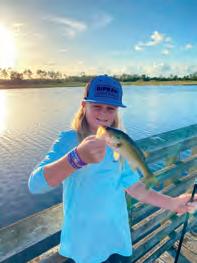
For more info
shown how to do this, we never needed a gaff or net. On the larger fish, a gaff or net is highly recommended.
Once on the hump and within an hour of starting our trolling pattern with small tuna feathers, we had eight nice sized tuna in the cooler –enough to feed a party of twelve. We asked TJ if we could try for some mahi. Although the big schools had yet to arrive, TJ agreed and took us out to the swordfish grounds where some loners had been spotted. We boated three mahi and called it a day!
On the trip in I reflected on the fact that not many captains would have left fish to find fish.
TJ has the confidence and skills to not only do that but to produce exactly what we asked for on our dinner menu.
Once back on shore we headed to the Hawks Cay Resort restaurant called Angler and Ale for our meal.
All in, we showed up with eight pounds of cleaned and filleted fish. Most restaurants will weigh and charge you by the pound to prepare and cook the fish you bring. This usually includes your choice of sides and multiple ways of cooking the fish. Blackened, grilled, sautéed and batter fried – everything was delicious! The highlight of our meal was the pan seared tuna lightly salted and peppered served with wasabi and soy sauce. So simple and yet phenomenal – kudos to the chef!
mark ambert, ig @marksgonefishing_™
author – avid outdoorsman, sportswriter, and photographer. Contact marksgonefishing25@gmail.com

heavy guns Fishing
Captain TJ zinkland
https://www.liveactionfishingcharters.com/ 786-378-1392
hawks Cay resort – angler and ale restaurant https://www.hawkscay.com/ 888-395-5539


Shellen Guide Service • (863) 357-0892 • sjmike7@aol.com

www.OkeechobeeBassFishing.com
As the summer heat settles in, June brings exciting fishing opportunities on Lake Okeechobee. Anglers can expect favorable conditions and a wide range of species to target. Here’s a comprehensive fishing report for the month of June, including lake levels and recommended lure types.
At the moment, Lake Okeechobee is experiencing stable water levels, hovering around 12 to 14 feet. This consistent level provides ample fishing areas and allows for productive angling throughout the lake. However, it’s important to note that water levels can fluctuate due to rainfall or management decisions, so staying updated is advised. June is an excellent time to experiment with various lure types to entice different fish species. For largemouth bass, topwater lures such as poppers, buzzbaits, and frogs are highly effective, especially during the early morning and late evening hours. Soft plastic worms, creature baits, and swimbaits also produce great results when fished around vegetation and structure.
For crappie, jigs and live minnows are popular choices. Look for submerged hydrilla, Kissimmee grass, and use light tackle to target these tasty panfish. Additionally, artificial crappie jigs in vibrant colors like chartreuse or white can be effective in attracting bites. Other species like bluegill and catfish can be targeted using live bait such as worms, crickets, or shiners. Fishing with a bobber or using a bottom rig with a weight is a common technique for these species. June temperatures can soar, so it’s crucial to stay hydrated,
wear sunscreen, and take precautions to beat the heat. Early mornings and late evenings often provide the best fishing conditions, as the fish tend to be more active during these cooler periods. Remember to follow all local fishing regulations and practice catch-and-release whenever possible to preserve the fishery for future generations.
With the promising lake levels and a diverse range of lure options, anglers visiting Lake Okeechobee in June are in for an exciting fishing adventure. Good luck and tight lines!

One of the most frequently asked questions I get is, “how much is my gun worth, and how much can I get for it?” That is a two-part answer. A lot of folks look at firearms as investments, however, on a financial level they are one of the worst investments you can make. Now let’s be clear, like cars, boats, cigars, and a host of other items there is a small circle of firearms that do hold their value or will increase in value with time, but those are not the majority of the ones people will buy for their protection or sporting use.

Another major factor is the political environment along with the current demand, supply and demand. One of the lessons in business, if demand is high and supply is low then of course you will pay over the normal amount, however, if demand is low but there are plenty out there then you will pay far less at that time. Take a Glock 17 for example, one of the most popular pistols out there. During the pandemic when demand was the greatest it has ever been that pistol was going for $800 to $900, now you can get them for $599 all day......that’s a $200 to $300 difference!
Now you have the actual value of the item. Everything has a wholesale and retail price. Guns are no different. Let’s say you no longer want that Glock 17 you bought for $750. The retail value for that previously owned gun is now about $400 to $450. When you take it to a local dealer to sell, you will be offered around $300. The dealer will then sell it for around $450. Don’t forget that businesses have to make money. Private sales are legal in some states (Florida is one of them), you can sell it on your own to retain some of the value and not take such a hit. You should check on the local state or county/city ordinances on selling privately first.
Firearms are not good financial investments. They are investments in your personal or family’s safety. They are used for recreational shooting and hunting. Police and militaries around the world use them for enforcing laws and protection of their citizens, but to think of them as money makers is not one of the better choices you can make to gain your financial portfolio.
Summer is on the horizon, and fishing couldn’t get better! It was a more challenging than usual spring season, and the lack of consistent weather made fishing more difficult. Summer weather can be brutal to fish in due to the very warm temperatures and afternoon thunderstorms, but the fish don’t mind it. I tend to start my days much earlier in the summer and be off the water before it gets too hot to bear.
Fishing morning conditions, you’ll want to throw topwater spooks and plugs, as most fish will be aggressive and ready to eat as the sun rises. Not a morning person? Fish the afternoon rain with topwater frogs for big bullseye snakeheads. When it’s raining, frogs, earthworms, and even lizards are on the move trying to find cover, which often ends them up in the water and a prime target for a snakehead or even largemouth bass.
I have been trying new things for slower fishing this past spring.
1. Finesse fishing: sizing down your lure profiles will increase bites on off days and high-pressured areas.
2. Wacky rigged worms have been a recent favorite of mine, and moving into summer, it will be an early morning favorite to many anglers who have the patience to fish one.
3. Live bait: whether it’s for peacocks, largies, or a subtropical cichlid, a live bait such as a shiner or a red wiggler worm may make all the difference from having a good day to having a great day on the water.
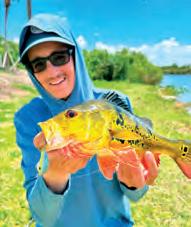
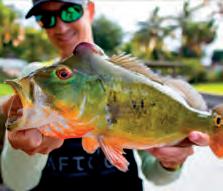

The Lake Ida Chain is getting better slowly by the day. It’s hard to believe it took over a month to recover from all the heavy rainstorms we had in April. Speaking of those heavy rains, The Everglades water level is now considered “high,” and fishing for exotics has slowed down, but don’t let that from stopping you from going out there and finding big largemouth bass out on the flats. I like using a swim jig with a Gambler EZ or a Texas-Rigged big EZ for more shallow areas.
The last subject I want to cover this month is clown knifefish. When the water temps get up in the summer, the water oxygen level is lower, and this will cause clown knifefish to come up and take a gulp of air more frequently than the rest of the year. You can target these clowns with live bait or artificial, and once you see them rolling on the surface, it gives their location away. Try to present a bait right around the area they came up and wait it out for 10 minutes or so for the fish to find it.
You can’t catch them sitting on the couch! Go out there and try new things!!

























Traveling to South Florida to fish is one of the top choices and the fishing is red hot. So, this month we’re talking tarpon and peacock bass.


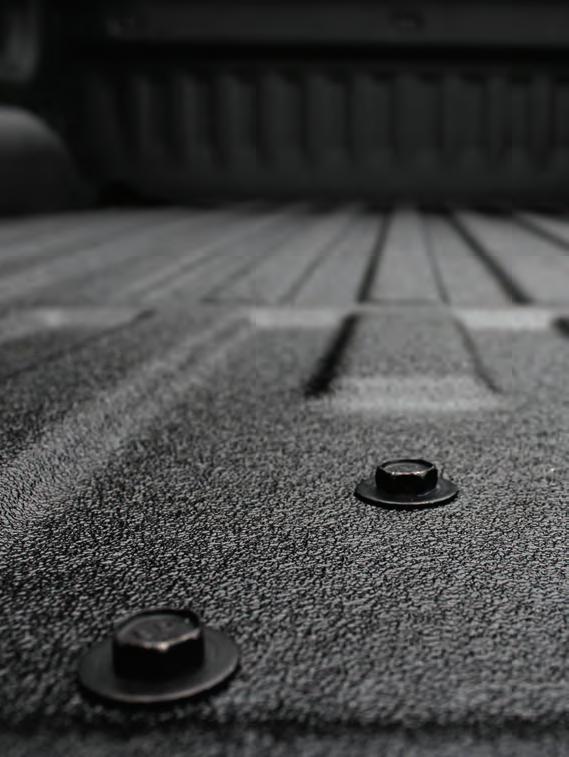




The Everglades offers lots of areas to find what was nonexistent years ago…peacock bass. Peacock bass have become the top choice of freshwater targeted species because of their bright beautiful colors and the fight they can give an angler.
Peacock bass were purposely stocked in South Florida waters in the 80’s to control the invasive species that people were dumping in these waters. Between the peacocks and the 17 other invasive species, the black bass have definitely declined in numbers. Black bass can still be caught daily and with almost every guide throwing back their catches this trend may continue, but this is another
story that needs to be addressed. Peacock bass can be addicting to catch and will excite every angler, so come to South Florida; one of the only areas in the United States to find this species.
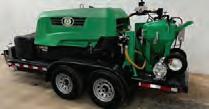
Tarpon season will have arrived, and tarpon fill areas in Flamingo ENP. Roaming from the Keys to Shark River and Whitewater Bay, these fish usually range from 10-200 lbs. and are usually targeted by the traveling fly angler coming to Florida for the big catch of a lifetime. If you’re not a fly angler, live bait and lures also are used to target the fish.

Catch and release is always the best option with big tarpon; 40 inches and above must not be lifted into the boat but released boat side for best results in the health/safety of the tarpon.

Come book a trip and experience some of the best fishing Florida has to offer with Captain Steve Purser @ FloridaFlatsFishingAdventures.
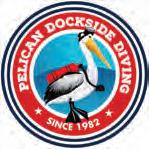


Iwait the entire year for the June fishing bite offshore. Every June, the schoolie sized mahi-mahi form up into large schools and migrate past our coastline, feeding voraciously on everything they come into contact with. It can be really exciting to go offshore in search of these schools of fish. One school can have 50+ mahimahi within it. Mahi have a very useful character trait in that they don’t leave each other behind. In other words, if you find a school of mahi-mahi and have one hooked up, just leave him swimming out there still hooked up to the line and the entire school will stay right with the boat. It can take some serious time trolling offshore to find a school like this, but what a pot of gold it is to find. Once you find them, just set the boat up on a drift and bail them on a 20-pound spinning rod. I usually use dead squid for bait until the fish start getting hook shy, and then I switch over to casting out live pilchards and ballyhoo if I have them available.
Inshore, on the edge of the Gulfstream, we’re still in the season where some big monsters can be caught. Large amberjacks are still biting around the shipwrecks, as are some nice grouper and cobias. Wrecks over 200’ deep work the best this time of year and live bait always gets the best bite. Big game sharks are still migrating along our coast in June too. Hammerheads and dusky sharks are out there in 300-400’ of water and can be caught with big bloody baits (a bonito or kingfish works best) drifted along the bottom. Trolling the reef in June is a lot of fun on the reef fish. We can catch lots of action trolling for kingfish, bonitos, barracuda, blackfin tuna, and wahoo. As the surface water temperature heats up, fish tend to go deeper, so you will get your best bites on deep planer baits if you are trolling. June
action, both inshore and offshore. Get


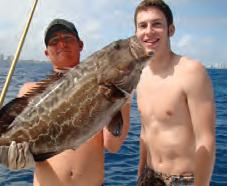
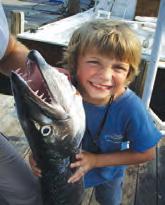
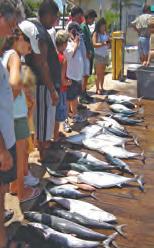
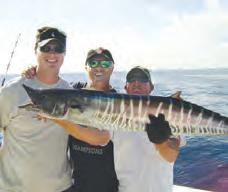











Let’s grow with Florida together.









Confessions of a Fishaholic, by Thatch Maguire, is a hilarious and irreverent look at one man’s quest to catch fish in spite of life’s annoying interferences. You’ll travel with this awkward adventurer as he risks home and health to pursue his passion for fishing...regardless of the consequences. Anglers of all expertise levels will immediately identify with why his addiction is incurable. This book defines the blurred line between passion and obsession.



Catch a 30-pound ve- sh sack of bass, and you’re pretty much a lock to win whatever tournament you’re shing, right?

Imagine that glorious moment when you’ve been culling 5-pounders and pull into the docks to unload your livewell. With a grin on your face, you haul that huge bag of sh up to the scales…only to nd out your 30-pound sack barely put you in the top 20! at was the reality at a May 6 Roland Martin Marine Center Bass Series event on Lake Okeechobee. e shing was so good that anglers weighed 20 ve-bass limits that were heavier than 30 pounds. It took 36.82 pounds to win. We’re not sure who keeps track of such things, but that’s more 30-pound sacks in one tournament than we’ve ever heard of.


A father-son team of Preston and 11-year-old Tavyn Heisler won the 177-team tournament and a $6,500 big check.

“It was an amazing day,” Preston told a RMMCBS reporter a er the tournament. “I’m still shaking and I couldn’t ask for anything better.”

Tavyn said he was the net man early in the tournament, but he caught his own 8-pounder late in the day. His favorite lure was a black and blue charterbait.
To read a full report on the event, visit: rolandmartinmarinecenterseries.com.

Maguire’s frst work is a compelling, fast read. His style is like a mix of Hemingway with a sardonic blend of Hunter S. Thompson. I couldn’t put it down...
Ben Martin
Editor in Chief Coastal Angler Magazine





Florida’s red snapper season will be 70 days long in 2023 and include both summer and fall dates. In early May, Gov. Ron DeSantis announced what he called the longest combined season since the state took control of red snapper management. e summer season will be 46 days, followed by a 24-day falls snapper season.
“Florida is the Fishing Capital of the World, and the Gulf red snapper season brings anglers from across the country to enjoy our waters,” said Gov. DeSantis. “It is a generational tradition for so many who call Florida home. I am happy that 2023 will be by far the longest combined season since the state assumed management of red snapper.”

e 46-day summer season will begin on June 16 and run through July 31. e 24-day fall season will include all weekends in October and November, Friday–Sunday.

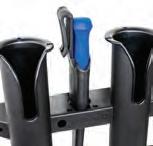


If you plan to sh for red snapper in state or federal waters from a private recreational vessel, even if you are exempt from shing license requirements, you must sign up as a State Reef Fish Angler (annual renewal required). For more information, see GoOutdoorsFlorida.com.

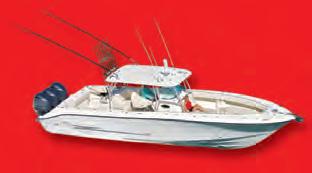
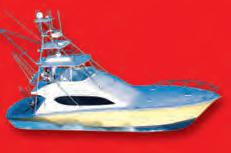

















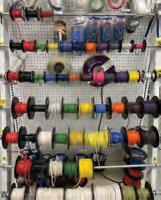

For all science knows about our sheries, there is plenty le to discover. Bone sh & Tarpon Trust scientists recently located a bone sh prespawning aggregation (PSA) in the Florida Keys. e discovery is the rst of its kind in Florida waters and the culmination of a years-long search that utilized acoustic telemetry and the historical knowledge of veteran shing guides.
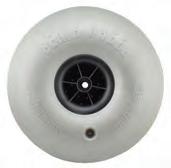

“ is is a major discovery for the Florida Keys shery,” said BTT President and CEO Jim McDu e. “BTT has previously identi ed PSAs in several other countries, but Florida sites remained elusive—until now. By locating this PSA, our scientists will be able to learn more about where and how bone sh spawn in the Florida Keys, which is information critical to the sustained recovery of the population.”

Over the course of the 2022-2023 bone sh spawning season, which spans from October to April, BTT Florida Keys Initiative Manager Dr. Ross Boucek and his team tracked 67 sh and logged more than 94,000 detections. Many of these detections were in the area where BTT research during the 2021-2022 season and reports from shing guides indicated a likely PSA. Fourteen bone sh detected at the suspected PSA site had been tagged at distant ats, including two sh tagged 55 miles away.

e newly discovered PSA is comprised of approximately 2,000 to 5,000 sh and located three to four miles o shore along a reef. Previously documented PSAs in the Bahamas and Belize are located in nearshore waters.


At the site, BTT scientists also observed bone sh gulping air at the surface. Previous research shows that bone sh engage in this behavior before spawning to ll their swim bladders. At night, the sh dive hundreds of feet and rapidly ascend to the surface. e sudden change in pressure during the ascent makes their swim bladders expand, enabling the bone sh to release eggs and sperm. A er fertilization, hatched larvae dri in ocean currents before settling in shallow sand- or mud-bottom bays, where they develop into juvenile bone sh.
“As a Keys shing guide for 53 years, with a science background, I took bone sh for granted—they were what I shed for every day,” said Capt. Rick Ruo , member of the BTT Board of Directors. “I thought that I knew all about the resource, until the population crashed. I discovered neither I, nor anyone else, knew where or how bone sh spawned—a major gap in our knowledge. BTT has come up with the amazing science to determine the dynamics of bone sh spawning. It has been a great lesson to me that we have located this missing piece of the puzzle. To have a healthy population and management goals, you have to understand all aspects of your resource. I am so proud to be part of the BTT science e ort that has unraveled these bone sh mysteries and will witness their rebound.”

Lasting 2-3 times longer than wooden, concrete, and aluminum docks, our modular foating system is the preferred dock choice for residential, commercial, marina, liesure, and other applications. Customizable and confgurable for boat docks, liesure and recreation docks, and drive-on jet ski and personal watercraft!



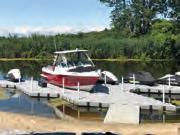

•High-quality plastic
•Environmentally-friendly


•Guaranteed for 20 years
•Near-zero maintenance
•Completely customizable

•UV and pollution resistant

www.candockcf.com























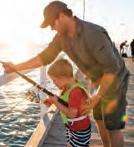
Loop knots leave a small loop of line rather than a knot snug against the hook eye. ey are important to have in your repertoire for shing arti cials because that loop allows a little more movement when you’re working lures like jigs, topwaters and plugs.

e Kreh knot, developed by legendary y sherman Le y Kreh, was originally intended to be used for streamers and bait sh ies. It is also a great choice for conventional anglers throwing any lure that needs a touch of freedom to strut its stu Also known as the non-slip loop knot, it is strong and easy to tie, and it works well with both mono lament and uorocarbon lines.
With the Kreh knot, you give up a bit of strength in comparison to snug Palomar or uni knots, but you’re trading it for lifelike lure action. e
venerable Rapala knot is another great loop knot that might be a little stronger than the Kreh. However, the Kreh is a tad easier to tie, making it our go-to loop knot for lures in freshwater or salt.
For more shing tips and tricks, visit usangler.com.


Nestled on six lush tropical acres of pristine waterfront directly on the Indian River Lagoon, take a step back in time to experience the very best of Old Florida charm with modern conveniences and services to make your stay truly memorable and unforgettable.
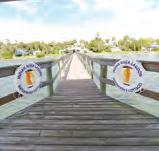


• FULLY FURNISHED 3 ROOM COTTAGES WITH FULLY EQUIPPED KITCHENS



Kingfsh Lodge includes a wide screenTV and bar for small gatherings Sailfsh House features a wide covered wrap-around porch for larger groups
• Boat Trailer Parking on site w/ Water and Power
• 250 Foot Dock w/ Covered Area
• FREE Ice / FREE Guest Dockage
• Cable TV, Hi-Speed Internet


• 2 miles to the Ft. Pierce Inlet
• 12 miles to the Gulf Stream

• Laundry, BBQ Grilles and FREE use of our Kayaks


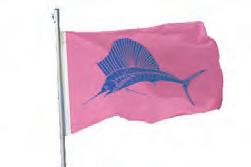

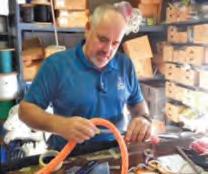
Timothy Crowley was shing Kenansville Lake with Capt. Morris Campbell on March 23 when he caught this 13.10-pound lunker.
Orange Lake keeps pumping out giant largemouth bass. e latest leader in Florida’s TrophyCatch program is a 14-pound, 1-ounce monster from Orange Lake. Chad Dorland caught the sh on April 23 to claim the top spot in FWC’s big-bass recognition program.

Dorland’s sh is the third 13-plus-pounder to come from the 12,550acre Alachua County lake since February. On Feb. 3, Luke Matthews caught a 13-pound, 8-ounce bass at Orange Lake. Anthony Holland caught a 13-pound, 3-ounce beast at Orange Lake on Feb. 25.
Fish weighing more than 13 pounds are awarded Hall of Fame status in the TrophyCatch program. Five Hall of Fame sh have been caught since TrophyCatch season 11 began on Oct. 1, 2022. ree of the ve were caught at Orange Lake, which has also seen 13 other bass weighing more than 10 pounds submitted to the program in that same time period. ose statistics don’t even include all the other lunkers anglers have likely caught and not entered into the program. It’s safe to say Orange Lake is a big-bass factory at the moment.
e other two 13-plus-pound TrophyCatch entries this year were both caught in March. On March 4, Russell Bauknight caught a 13-pound, 8-ounce hawg at Holden’s Pond, which is just up the road from Orange Lake in the same sprawling system of shallow, vegetation- lled waters southeast of Gainesville. On March 23, Timothy Crowley caught a 13-pound, 10-ounce sh that gave him the top spot in TrophyCatch before Dorland caught his 14-pounder. Crowley’s sh came from Kenansville Reservoir down in Indian River County.
For more information, visit www.trophycatch orida.com.







Hand closes Aug. 6, allowing harvest to begin during the weekend in advance of the Fourth of July holiday.
“Extending the season will increase the economic bene ts from this popular recreational shery to local communities in the region,” said Jessica McCawley, Division of Marine Fisheries Management Director. We will continue these e orts by exploring long-term season options for future years via the formal rulemaking process.”

Between 2017 and 2020, FWC took a pilot approach to establish regionally speci c bay scallop regulations while also maintaining the sustainability of local scallop populations. As part of this e ort, the allowable harvest area for scallops was extended to include Pasco County waters starting in 2018. e Pasco Zone for bay scallop management includes all Florida waters south of the Pasco-Hernando county line and north of the Anclote Key Lighthouse, approximately 0.37 miles south of the Pasco-Pinellas county line.



e daily bag limit in this area is 2 gallons of whole bay scallops in the shell or 1 pint of shucked bay scallop meat per person, with no more than a total of 10 gallons of whole bay scallops in the shell or 1/2 gallon (4 pints) shucked bay scallop meat per vessel.


For more information, go to MyFWC.com.












For anglers looking to conquer the toughest offshore conditions, Okuma’s Cavalla 2-Speed Lever Drag reels are the ultimate weapon of choice. Over the past decade, Okuma has cemented its position as a leader in the saltwater market, starting with the groundbreaking Makaira line of reels. Today, the Cavalla 2-Speed Lever Drag is yet another example of Okuma’s unwavering commitment to providing top-tier, reliable products for saltwater anglers.
With its compact, machined aluminum frame and side plates, the Cavalla is a reel that can withstand the toughest conditions Mother Nature can throw at it. The rigid one-piece frame ensures stability and durability, while the cold-forged, type-II anodized machined aluminum spool adds to the reel’s sleek, rugged design. Whether you’re targeting monster grouper, sailfish, giant snapper or other offshore saltwater species, the Cavalla is the reel you want in your offshore arsenal.
The Cavalla reels feature a battle-proven carbonite drag system with Cal’s drag grease that can put out an impressive 24 to 34 pounds of drag at full. The 17.4 grade stainless steel main and pinion gear, along with the CRC coating process, make this reel virtually corrosion resistant. With four corrosion-resistant stainless-steel bearings and a silent retrieve system, the Cavalla operates
smoothly and efficiently, ensuring that you never miss a catch.
Okuma’s Cavalla
2-speed reels feature a 6.4:1 and 3.8:1 gear ratio on the 5 size reels and a 4.7:1 and 2.1:1 gear ratio on the 12 size, allowing for versatile performance across a range of fishing styles. The 5 and 12 size reels come in both left- and right-hand retrieve and feature an on/off bait clicker. The reel’s compact size and comfortable Ergo Grip handle knob and anodized aluminum handle arm make it easy to handle and use for extended periods of time.
So, why should you choose the Cavalla lever drag reel for your next offshore fishing trip? Here are five reasons:

• Durable Construction: The Cavalla’s machined aluminum frame and side plates, along with its corrosion-resistant components, ensure that this reel can handle the toughest offshore conditions with ease.
• Versatile Performance: With its 2-speed capabilities and variable gear ratios, the Cavalla is a reel that can adapt to a range of fishing styles and conditions.
• Smooth Operation: Thanks to its silent

the Cavalla operates smoothly and efficiently, ensuring that you never miss a catch.
• Strong Drag System: The Cavalla’s carbonite drag system with Cal’s drag grease can put out up to 34 pounds of drag, making it a reel that can handle the biggest and toughest fish in the ocean.
• Comfortable Handling: With its compact size and Ergo Grip handle knob and anodized aluminum handle arm, the Cavalla is a reel that you can use comfortably for extended periods of time, even during the toughest offshore fishing trips.
The Okuma Cavalla 2-Speed Lever Drag reel is an all-around, top-of-the-line reel that every saltwater angler should have in their arsenal.
For distributors and retailers, Okuma Fishing Tackle Corporation will be available to meet at ICAST 2023 in Orlando, Fla. July 11-13 at Exhibit Hall Booths 1202 and 1308.

It’s Kingfish Time! The 43rd annual 121 Financial Credit Union Greater Jacksonville Kingfish Tournament is slated for July 17-22, 2023. For five days, with four tournaments and $400,000 in prizes, the “Grandaddy of all Kingfish Tournaments” will keep the docks buzzing with fun events for everyone from die-hard anglers to casual spectators.

The cornerstone of this historic and thriving event is the general tournament, which launches Friday, July 21 with a boat package valued at $160,000 going to the team that lands the largest kingfish. The grand prize is a sweet 25-T Contender with twin 150hp Yamahas, a custom T-top by Custom Marine and an Ameritrail trailer. The tournament pays through 20 places for largest fish and aggregate, as well as a Lady Angler division that pays to 10 places, totaling nearly $250,000 in cash and prizes.

All the boats and the fish coming into the docks at Jim King Park and Boat Ramp at Sisters Creek Park in Jacksonville creates a festival atmosphere. Traditionally, the tournament draws thousands of spectators who enjoy cold beverages, hot food and vendors at the Liar’s Tent. Awards Day on Saturday, July 22 is all about celebration, with Kids Zone activities, drawings and a fishing seminar, followed by eye-popping fireworks in partnership with the City of Jacksonville.
Also for the kids, there is a Junior Angler Offshore Tournament on Wednesday, July 19, as well as a Junior Angler Dock Tournament. The grand prize in the Junior Angler Offshore Tournament is an Ohana 14’ skiff with a 25hp Yamaha and trailer, and this tournament pays through 25 places.
popular Redfish Tournament fishes on Saturday, July 22, with weigh-ins at 2 p.m. during the Awards Day activities.

Through its history, the Greater Jacksonville Kingfish Tournament has been all about putting on a great tournament and helping to provide access to marine resources and promoting education, preservation and research in partnership with its junior anglers and Jacksonville University’s Marine Biology Department. Jacksonville Marine Charities is the operating arm of the event, and it supports non-profits throughout the state. Recently, Child Cancer Fund, the Down Syndrome Association and the Child Guidance Center have benefitted from the organization, which also supports other local charity fishing events like The Premier Trout, Flounder Pounder, Wounded Heroes on the Water and others.
For complete details, go to https://kingfishtournament.com/.
Coastal Angler and The Angler Magazine, Suzuki Marine and Sea Eagle have come together to offer readers a shot at this Sea Eagle FishSkiff 16 paired with a Suzuki DF4 outboard that’ll take you wherever the fish are. The FishSkiff 16 is an inflatable fishing boat that is lightweight, sturdy, stable and extremely packable. It rolls up small enough to fit in the trunk of a car and quickly inflates into a fishing machine. Powered by Suzuki’s four-stroke DF4A, you’ll have to hold on to your hat as you scream over the flats. Designed for efficiency and performance and portability, the DF4A provides all the speed and acceleration you can handle. It’s lightweight and can be attached or removed with ease.


Breakdowns are unpredictable, make them less stressful with an Unlimited Towing Membership from TowBoatU.S. You can relax, we’ve got your back.

This is the time of year when bass gorge themselves on bluegill. One of the best ways to catch bluegilleaters is with a swim jig.
The swim jig is a versatile bait. It can be used in different colors and actions that drive bass crazy. All the variety can make jig shopping a bit overwhelming. There are thousands of color options, countless styles, different hooks and line-tie variations. When I’m looking for the perfect swim jig, I keep a few things in mind. I only throw two different color combinations, bluegill duplicators— the greens, browns and oranges—and a black and blue. You want a jig with a slender head style with a vertical line tie that will come through the cover you’re fishing. I also like a jig with a stout hook. Throwing a swim jig around heavy cover calls for heavy line, and you don’t want your hook to bend out or break when you hook into a big one.
Selection of jig trailers can also be overwhelming. Guess what? I only throw two different styles of trailers. I usually put a swimbait-style trailer with a boot tail on the back, but occasionally I’ll use a craw trailer with two kicker legs. At the end of the day, you just want something back there kicking
and giving your jig some action, and these two styles are my go-to. I match the color of the trailers to the color of the jig.
The cover to target with a swim jig can be endless. They are great in vegetation as well as around docks, wood, rocky banks and for covering water over expansive flats with wood and grass. You can cover a lot of water with this bait, and typically covering more water leads to more bites. You should throw it anywhere bass are chasing bluegills or where bass are actively feeding. I always keep one tied on and ready.
A retrieve I find myself using a lot is a yo-yo retrieve. Point the rod tip high and vary the retrieval speed by either cranking fast and slow or moving the rod tip. This gives the bait some erratic movements and drives them crazy. I also use a steady retrieve. Depending on the part of the water column you are trying to target, you can reel the bait fast and keep it up high—even on the surface—or slow it down and creep it deeper, maybe to keep it around some submerged cover.
Fishing cover requires heavier equipment. I fish a heavy action rod with a length between a 7’3” and 7’6”. The 13 Fishing Defy Black 7’5H is a super affordable rod and is awesome for the job. Pair the rod up with a fast reel like the 13 Fishing Concept A 7:5 spooled up with 50-pound Seaguar Smackdown braid, and you are ready to put some fish in the boat.

Tyler Woolcott is a professional tournament angler and guide. Check out his website at www.tylerwoolcottfishing.com.
















































The super sleek, super stable inflatable FishSkiff™ 16 now features a patented drop-stitch outside keel for precise steering and better open sea motoring performance! Due to the new ultra-light, ultra-strong fusion technology that bonds two layers of reinforced PVC together the FishSkiff™ is super tough and super stable. Great for 1, 2 or 3 anglers.


Whether you use a gas or electric motor, the in atable FishSki ™16 will get you to the sh. Add a canopy for protection from the sun or rain. Add a solar panel for perpetual power that can keep your electric motor battery charged; whether your camping, live on the water or just love the idea of solar power.
With the NEW drop-stitch keel, you’ll have less course correction and improved performance. The low gunwales give you superb access to the water for landing sh, releasing sh, and getting on & o the boat.




















In early May, a 600-plus-pound bluefin tuna was brought to the docks at Alabama’s Orange Beach Marina. It was not a world or state record, but it was a giant fish and a first for Capt. Johnny Greene who has been a charter captain for the last 33 years.

According to the story written by David Rainer for the Alabama Department of Conservation and Natural Resources (ADCNR), Greene and his crew aboard the Intimidator were hosting a group of anglers from Georgia on a three-day trip deep into the Gulf of Mexico. Greene said he has encountered big bluefins before in the April and May timeframe, when they arrive in the Gulf to spawn, but he’s never managed to put one in the boat or even “slow one down.”



“Last year we hooked one about noon and fought that fish four or five hours. We had 10 people on that charter, and they ended up changing the rod between anglers probably 20 or 25 times,” he told ADCNR. “We ended up breaking a rod after fighting him that long. We were so close, so that one was really a heartbreaker.”
This recent trip did not end in heartbreak. After hooking the fish, the Intimidator chased it for about 2 miles before getting to within 100
feet of the leader. Then the fish dove deep. They managed to stop the dive with a Shimano 50-wide and a stand-up harness, and after battling it for about four hours they could tell the fish had died. They began the laborious process of winching it up on 80-pound-test mono.
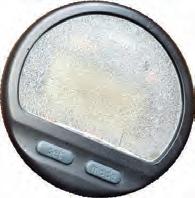


“When you have to pull a 600-pound animal up, it’s not the easiest thing to do,” he told ADCNR. “It requires communication between the angler, everybody in the cockpit and the wheelhouse. It’s basically a momentum game. You’ve got to get the fish coming up, and you have to keep him coming. If you take a break, the fish is going to start sinking again. It’s tricky.”


The celebration began when they finally brought the giant fish to the surface and tethered it with a tail rope. They used a come-along to hoist it into the boat.


Knowing their fish was not a record, the crew went ahead and gutted it and iced it down to preserve the meat during the ride home. It weighed 579 pounds gutted, with an estimated total weight of 625 pounds. The Alabama state record, caught in 2006, weighed 829 pounds.
To read David Rainer’s entire account of the catch, go to www.outdooralabama.com.
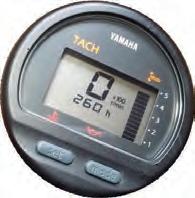
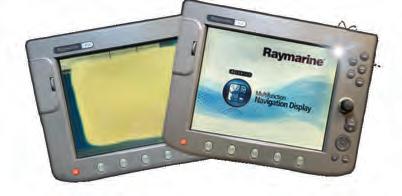



believe the popping cork found its beginnings in the 1930s, and it’s still a mainstay in most saltwater anglers’ tackle boxes. Many versions have been introduced along the way and undoubtedly more will come. One thing is for certain, if they didn’t work, they would not have lasted for nearly a century. In Texas, a popping cork typically finds itself dragging a live shrimp, but there are other options. What makes the popping cork stand out is the cupped top, which creates a popping sound and splashes water forward when twitched. It simulates a fish feeding on the surface.


I was once no different than the masses tossing live shrimp under a cork, but in the early 2000s— when I had already turned my focus to exclusively lure fishing—I found another place for the simple but effective popping cork.
At that time, our famous Baffin Bay was plagued with brown tide, an algae bloom that turns the water, well, brown. The water had nearly zero visibility, which made fishing soft plastics difficult at best. Looking back, I wish I had already invented my Knockin Tail Lures with the built in tail rattle, but better late than never. At the time, I started using lures under a cork instead of live shrimp. I realized a noticeable increase in the number of fish I was able to catch. Depending on the circumstances, I would use a jighead, a weighted weedless hook or an unweighted hook about 24 inches under my cork. Although I heard
a lot of grief from my buddies who would not touch a popping cork, it worked and I continued to out fish them on most trips. I stayed with this technique in Baffin until the brown tide cleared.
A lure under a cork is also a great way to introduce kids to lure fishing. Paddletails, twitch baits and artificial shrimp all work well with this strategy. The method takes a lot of the hand coordination out of the picture for children and lets them realize that you don’t need live bait to catch fish.

Another of the many options this cork gives the angler is a way to effectively fish jetties. At times, trout will suspend 8 to 10 feet deep off the rocks. In this situation, the popping cork’s sound creating ability is still important, but it needs to be modified. Casting a cork with 10 feet of leader to get your lure down to the fish creates a challenge. This is where the slip cork method comes into play. With a slip cork, you can cast a 2- or 3-foot leader or less, but the cork will have a rubber stop that allows your bait to sink to the desired depth where the bite is. Look up slip cork for more on this method.
The weather is warm, don’t forget to take a kid fishing!
To some, sunglasses are a fashion accessory…
Drivers’ Alert: Driving can expose you to more dangerous glare than any sunny day at the beach can… do you know how to protect yourself?
Thesun rises and sets at peak travel periods, during the early morning and afternoon rush hours and many drivers find themselves temporarily blinded while driving directly into the glare of the sun. Deadly accidents are regularly caused by such blinding glare with danger arising from reflected light off another vehicle, the pavement, or even from waxed and oily windshields that can make matters worse. Early morning dew can exacerbate this situation. Yet, motorists struggle on despite being blinded by the sun’s glare that can cause countless accidents every year. Not all sunglasses are created equal. Protecting your eyes is serious business. With all the fancy fashion frames out there it can be easy to overlook what really matters––the lenses. So we did our research and looked to the very best in optic innovation and technology. Sometimes it does take a rocket scientist. A NASA rocket scientist. Some ordinary sunglasses can obscure your vision by exposing your eyes to harmful UV rays, blue light, and reflective glare. They can also darken useful vision-enhancing light. But now, independent research conducted by scientists from NASA’s Jet Propulsion Laboratory has brought forth ground-breaking technology to help protect human eyesight from the harmful effects of solar radiation
Eagle Eyes®
Lens
more vivid and sharp. You’ll immediately notice that your eyes are more comfortable and relaxed and you’ll feel no need to squint. The scientifically designed sunglasses are not just fashion accessories—they are necessary to protect your eyes from those harmful rays produced by the sun during peak driving times.
light. This superior lens technology was first discovered when NASA scientists looked to nature for a means to superior eye protection— specifically, by studying the eyes of eagles, known for their extreme visual acuity. This discovery resulted in what is now known as Eagle Eyes
The Only Sunglass Technology Certified by the Space Foundation for UV and Blue-Light Eye Protection. features the most advanced eye protection technology ever created. The TriLenium Lens Technology offers triple-filter polarization to block 99.9% UVA and UVB— plus the added benefit of blue-light eye protection. Eagle Eyes® is the only optic technology that has earned official recognition from the Space Certification Program for this remarkable technology. Now, that’s proven science-based protection.
The finest optics: And buy one, get one FREE! Eagle Eyes® has the highest customer satisfaction of any item in our 20 year history. We are so excited for you to try the Eagle Eyes® breakthrough technology that we will give you a second pair of Eagle Eyes® Navigator™ Sunglasses FREE––a $59.95 value!
That’s two pairs to protect your eyes with the best technology available for less than the price of one pair of traditional sunglasses. You get a pair of Navigators with stainless steel black frames and the other with stainless steel gold, plus one hard zipper case and one micro-fiber drawstring cleaning pouch are included. Keep one pair in your pocket and one in your car. Your satisfaction is 100% guaranteed.
If you are not astounded with the Eagle Eyes® technology, enjoying clearer, sharper and more glare-free vision, simply return one pair within 30 days for a full refund of the purchase price. The other pair is yours to keep. No one else has such confidence in their optic technology.Don’t leave your eyes in the hands of fashion designers, entrust them to the best scientific minds on earth. Wear your Eagle Eyes® Navigators
Studies by the National Highway Traffic Safety Administration (NHTSA) show that most (74%) of the crashes occurred on clear, sunny days


Navigator™ Black Stainless Steel Sunglasses
Receive the Navigator™ Gold Sunglasses (a $59.95 value) FREE!
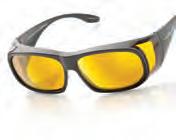


just for trying the Navigator™ Black
Navigator™ Gold Stainless Steel Sunglasses
Certified EAGLE EYES® was developed from original NASA Optic technology and was recently inducted into the Space Foundation Technology Hall of Fame.

Fit-ons available for $39 +S&H
Black or Tortoise-Shell design
with absolute confidence, knowing your eyes are protected with technology that was born in space for the human race.
Two Pairs of Eagle Eyes® Navigator™
Sunglasses $119.90†
Offer Code Price $49 + S&P Save $70.90
Offer includes one pair each Navigator™
Black and Navigator™ Gold Sunglasses
1-800-333-2045
Your Insider Offer Code: EEN957-06
You must use this insider offer code to get our special price.
14101 Southcross Drive W., Ste 155, Dept. EEN957-06 Burnsville, Minnesota 55337 www.stauer.com
the offer code versus the price on Stauer.com without your offer code.
If this potbellied 73.29-pound lake trout isn’t a new world record, it should be.

Scott Enloe and his son Hunter were fishing an undisclosed Colorado lake in early May when Scott hooked into the 47-inch-long monster on a 6-inch tube jig and 10-pound test. According to Free Range American, it took 13 tense minutes to fight the huge laker boat-side, and both men had to haul it over the side because their net was too small to land the fish.
The fish was full of eggs and had an incredible girth of 37 inches. After some photos and measurements, they released it to go lay those eggs and spread the genetics for obesity.
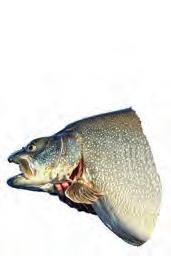
The IGFA all-tackle world record for lake trout weighed 72 pounds, even. It was caught in 1995 by Lloyd Bull at Great Bear Lake in Canada. With the strict procedures required by IGFA for record consideration, it is unlikely Enloe’s fish will break the all-tackle world record, but there is a chance the organization will consider it for a world length record.
The current Colorado state record weighed 50.35 pounds. It was caught by Donald Walker in 2007. We’re not sure about Colorado’s record submission requirements, but most states require a weight taken on certified scales.
Regardless, it is the fish of a lifetime for Enloe, and if it doesn’t qualify for a record… it should.
To read the full report from Free Range American, go to https:// freerangeamerican.us/world-record-lake-trout-enloe/
There’s no doubt these guys can get it out past the breakers. The Carolina Surf Casters Association gets together four times a year to hold distance-casting competitions. In an April contest, North Carolina’s Ryan Lambert set a record for the longest fishing cast in U.S. history. He launched a massive 889-foot, 4-inch cast.
Lambert is a frequent competitor in the sport of surf casting, known in Europe as long distance casting of sea weights, in which participants gather on a large marked field with surf fishing tackle to see who can cast different sizes of large sinkers (3.5 to 8 ounces) the farthest.
Though the sport originated in the U.S., reportedly as far back as the 1890s, it has become more popular in Europe and South America in recent decades. Only three surf casting clubs exist in the U.S. today. They are SurfCast USA (SCUSA), based in Maryland, Surf Fishing & Casting Club International (SFCCI), on Texas’ Gulf Coast, and Carolina Surf Casters Association (CSCA), in eastern North Carolina.
Lambert is the vice president/secretary of the CSCA – a more than 10-year-old organization with members from North Carolina, South Carolina, Delaware, Virginia, Maryland and Texas. The club organizes four competitions per year in spring and fall. These events are open to surf casters of all skill levels.
Lambert, a sales representative for a large agricultural supplier, lives in Angier, N.C., with his wife Blair and their two daughters. He’s an experienced saltwater fisherman who, like most competitive casters, originally developed long-distance casting skills to improve catch rate from piers and the beach. He learned those skills under the tutelage of fellow North Carolinian and long-time U.S. surf casting champion Tommy Farmer.
Tapping into his athleticism from playing baseball for N.C. State University, Lambert is able to generate huge power using a pendulum cast. This highly specialized technique involves swinging the sinker into an orbit around the tip of a long 12- to 14-foot surf rod, and at a precise moment, rotating the body and rod through a large arc, ending with a powerful punch-pull motion with the right and left arms.
“It’s great that one of our own from North Carolina—someone from our club, no less—was able to set this new benchmark,” said Matt Tuers, president of the CSCA. “One of the main objectives of this organization is to grow a community where U.S. casters can develop and start taking back the international records. Casters like Ryan are in a position to do that, as well as inspire the next batch of elite American competitors.”
The current world record longest cast is held by “Big Danny” Moeskops of Belgium with a 940 foot cast made in the early 2000s. The previous U.S. record was held by Will Nash of Texas, with 873 feet.
Check out CSCA at carolinasurfcasters.org.



Watauga River
Home of world class fishing on the beautiful Watauga Lake, rugged Doe River and designated trophy trout stream, Watauga River PLAN
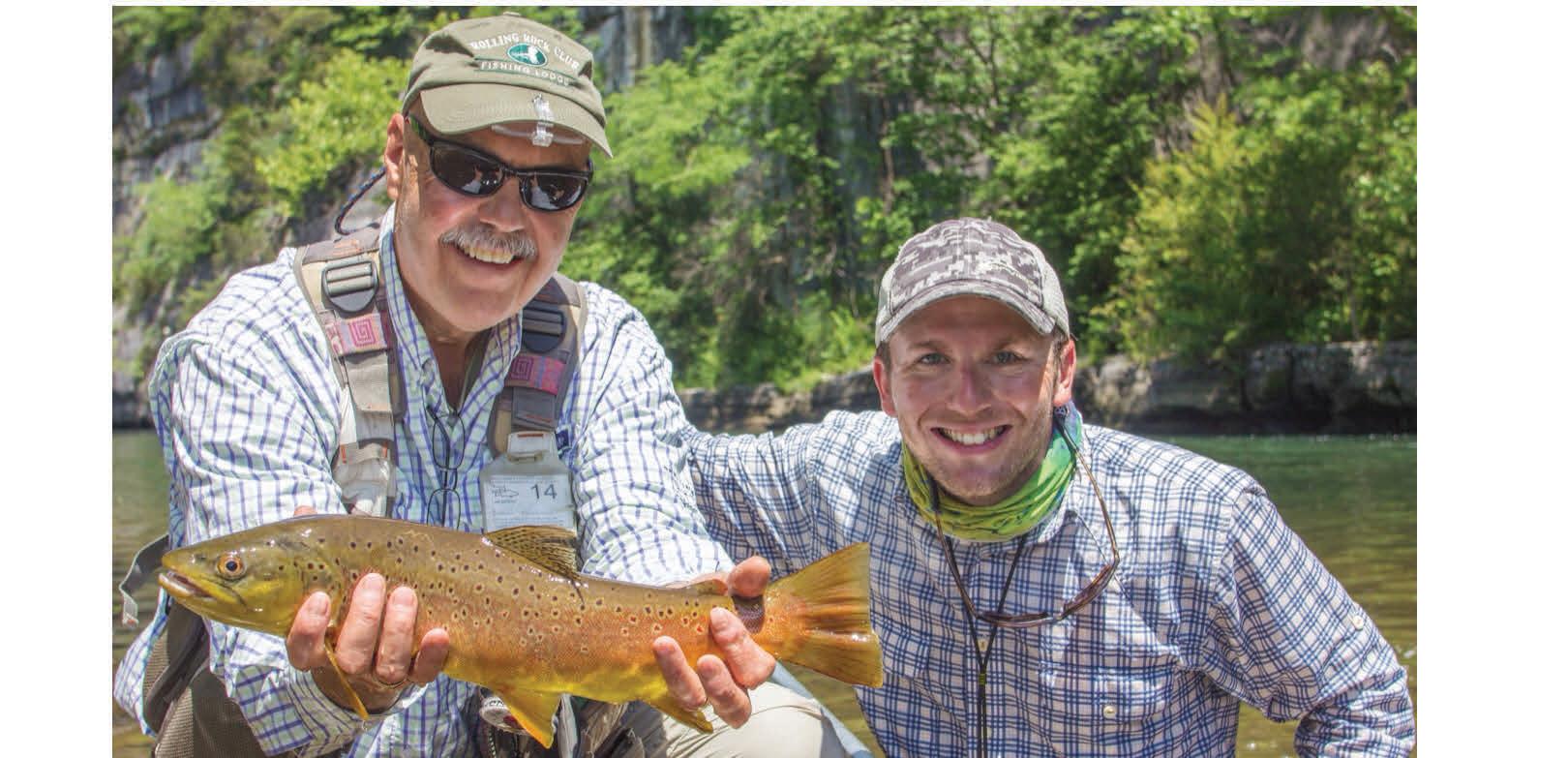

Watauga Lake
Doe River

